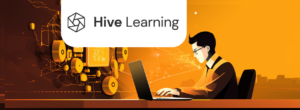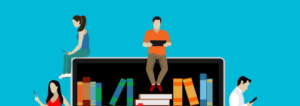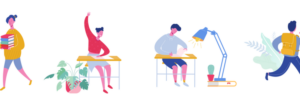Reframing L&D for the pandemic mind
- 7 Min Read
As the working world has changed, so too has L&D. Organisations must address this in 2021
- Author: Janine Nicole Dennis
- Date published: Feb 25, 2021
- Categories

According to an article by Time, a 2020 survey found that 40% of Americans reported feeling less productive during the pandemic. As we get deeper into year two of living and working through Covid-19, this statistic spells challenges not only for the health of work environments, but for the future of L&D. With people feeling less productive, how do organisations continue to ensure that their workforces are skilled and adequately-prepared to adapt to an ever-changing business landscape?
Quite simply, it requires leaders to reframe the way they design and deploy L&D opportunities.
Six components of L&D
The pandemic has prompted us to revisit some fundamental principles in all sectors. According to the Centre for Development and Learning, there are six components that allow humans to acquire new knowledge: attention, memory, language processing and organising, writing and high order thinking. Each of these can interact with one another and with emotions, classroom environment, behaviour, instructors etc.
Attention span was already challenged pre-pandemic due to our daily lives being inundated by mobile devices and digital distractions. For instance, Statista reported in March 2020 that Americans consume 7.5 hours of media each day on average. Why is this important? Because it’s worth exploring how your people learn new things and how they wish to consume information.
Traditionally, L&D has struggled to ensure that employee interests have been accounted for in the design of programmes and initiatives. Couple that with mounting mental health concerns due to the pandemic and we have a unique set of circumstances with which to chart a new path. In a certain way, the way you design, market and deliver learning needs to pivot to test what works for your learner population.
The Fourth Industrial Revolution
What’s more, this dilemma exists on a wider scale. In an interview last year, Klaus Schwab, Founder and Executive Chairman of the World Economic Forum said: “Without urgent and targeted action today to manage the near-term transition and build a workforce with futureproof skills, governments will have to cope with ever-growing unemployment, inequality and businesses with a shrinking consumer base.”
Our failure to be both predictive and prescriptive regarding the nature of business has forced L&D and HR leaders into two camps:
- The leader scrambling for insight and examples of pandemic-proof applications of learning and development
- Or the leader who has completely lost sight of L&D beyond the training for matters of health and safety.
Luckily, budget does not seem to be a pervasive challenge even with a looming pandemic. LinkedIn’s 2020 Workplace Learning Report has details that L&D budgets are expected to continue to rise. Since budget is less of a problem, it leaves L&D with task of repurposing the budget to ensure learning is not only aligned with current shifts, but is set on a track for sustainability throughout the remainder of the decade. In order to get there, some major considerations must be taken into account before we collectively decide what the future holds for L&D.
Here are some ways to begin organising your approach to reframing your current L&D environment.
Determine your workforce’s capacity for L&D
With people working remotely while juggling personal responsibilities and navigating the mounting social and emotional pressures of uncertainty, it is worth exploring what employees need to do their jobs and what learning opportunities they desire to continue progressing in their respective careers. The top-down push of standard L&D opportunities may work for regulatory matters, but if we are talking about building a futureproof workforce we need to take a more collaborative and empathetic approach.
Build a model for futureproof skills
To begin this journey to figuring out what futureproof skills are most pertinent to your business, you’ll need to assess the present climate and make some educated guesses about the future of the organisation. The focus and temperament of the worker of the 20’s and even 30’s will look extremely different – especially as organisations embrace the gig economy model. Will people remain remote in the foreseeable future or will there be multiple models for the physical location of your employees? If you resume in-person learning, how can you facilitate learning en masse while keeping everyone engaged, healthy and safe? What tools will you need?
Use the current climate of uncertainty and slower pace to your advantage
We speak a lot about being agile in many industries, but what if the key to acceleration is in knowing when to strategically slow down so there is a better plan of action going forward. If nothing else, Covid-19 has been consistent in teaching us all to slow down and think things through. There are no modern precedents or tried and true methodologies for what we are experiencing in life and business. As a result, it offers us the ability to innovate and create new pathways to solve for L&D challenges.
This is a great time for L&D and HR professionals to use what is available to explore new ways to engage and excite the employee base. The gift is in having a bit of a beginner’s mind about the content and delivery. Get to know your learning community again by taking the time to crowdsource what is important to them, so you can connect those wish lists back to what the organisation needs.
The way we try to encourage young children to dedicate themselves to a life of learning is the same spirit we should foster in our organisations. Help your people discover what interests them again. Put the power back in their hands to drive their own trajectory of learning, similar to choosing courses to satisfy a degree. Organisations that are able to create centres of learning and innovation are likely to lead the way in having more knowledgeable, skilled and productive workforces.
L&D should be focused on core challenges in business and aligned with individual career goals. In looking at L&D this way, there is a common goal for developing people with a unique pathway for each learner to arrive at the finish line. Learning content should be consumable in a way that is most meaningful for your workforce. In some cases, that may be a forty minute podcast on a specific topic and yet in other instances, it could be as inviting and intriguing as a thirty-second Tik Tok video on an important topic. It is also important to focus on creating tacit knowledge acquisition in the online environment. Now that people aren’t meeting for lunch or running into one another in the hallway, how can you keep learning among teams alive?
Learning and development should be considered a creative function within the organisation as there are endless possibilities for creating intentional shifts in ideation, behaviour and mastery in a variety of focus areas. For the purpose of creating future-forward organisations, it’s time we treat the discipline as an integral and exciting point of collaboration along the employee lifecycle.









